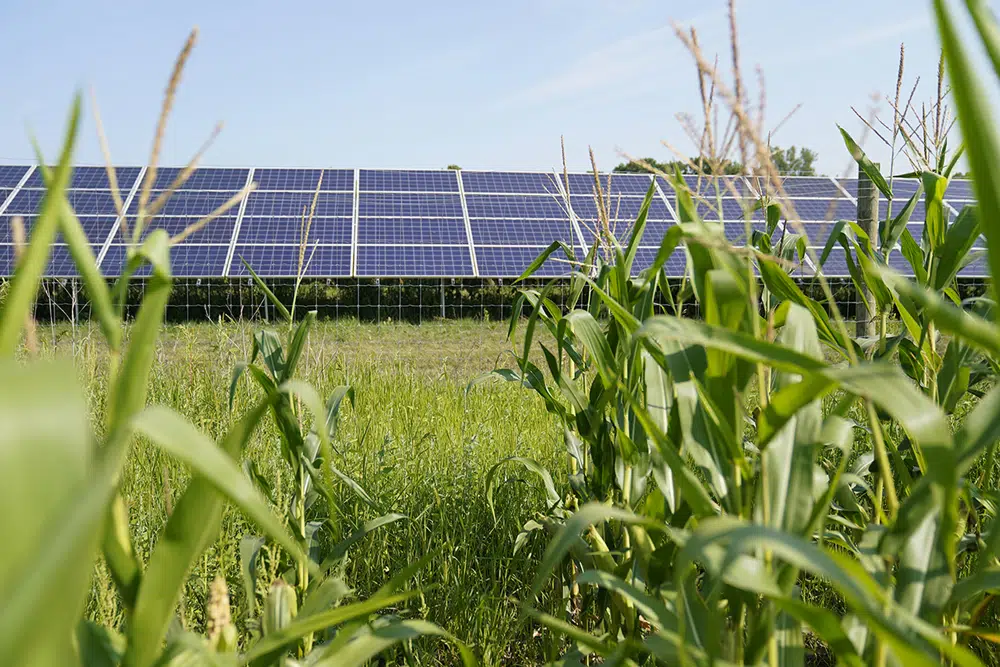
ST. PAUL, Minn. (AP) — Minnesota utilities would be obligated to transition to 100% carbon-free electricity by 2040 to step up the fight against climate change under a bill speeding through the Legislature.
The bill was slated for a final vote on the Senate floor Thursday night after passing the House 70-60 last week. It’s a top priority for Democrats, who control both chambers, and for Democratic Gov. Tim Walz, who has made it an important part of his climate agenda.
“Climate change is coming and has been here, and it affects everything we do,” the lead author, Democratic Sen. Nick Frentz, of North Mankato, said at the start of a debate that was expected to last well into the night.
The Senate’s two meteorologists — Democratic Sens. Nicole Mitchell, of Woodbury, and Robert Kupec, of Moorhead — detailed for their colleagues how climate change is accelerating across Minnesota. They said it’s leading to more extreme weather events, as well as hotter summers with more droughts and warmer winters with shorter ice-fishing seasons.
Senate Republicans said they planned to offer a long list of amendments that they said would reduce the costs to consumers and risks to the power grid, but the one-seat Democratic majority held firm on the first several votes.
According to the Clean Energy States Alliance, 21 other states plus the District of Columbia and Puerto Rico have already established some kind of 100% clean-energy standards or goals, most with target dates between 2040 and 2050.
Minnesota’s previous standard, set in 2007 by a Democratic-controlled Legislature and Republican Gov. Tim Pawlenty, set a goal of reducing overall statewide greenhouse emissions to at least 15% below 2005 levels by 2015, 30% by 2025 and 80% by 2050.
State regulators reported Tuesday that Minnesota’s greenhouse gas emissions declined by 23% between 2005 and 2020 and said the state was on track to achieve 30% by 2025. The biggest drop was in power generation, where emissions fell 54% amid the switch from coal to renewable energy.
This year’s bill aims to further shift utilities away from fossil fuels to wind and solar, but it also allows them to use hydropower, biomass, hydrogen and existing nuclear plants to go carbon-free. Utilities that can’t quit coal or gas on their own could ask regulators to let them use “off ramps” to delay compliance, or they could use renewable energy credits to make up the difference.
Minnesota’s biggest utility, Xcel Energy, supports the legislation, saying it fits with its own goals, even though company officials say they’re not exactly sure yet how they’ll get all the way to carbon-free by 2040. But the state’s smaller rural electric cooperatives and municipal power systems say it would be a lot harder for them and that the costs to their customers will be high.
Republican North Dakota Gov. Doug Burgum and other top officials in his state threatened last week to sue Minnesota if the bill is enacted, saying it would prevent North Dakota utilities from continuing to export power generated from coal and gas to Minnesota.
GOP critics in Minnesota have dubbed it a “blackout bill,” saying that it will undermine the reliability of the state’s power grid — especially on the coldest winter nights and hottest summer days — in addition to forcing consumers to pay higher energy costs.
They held a news conference before the debate to propose a different approach, which would repeal the state’s moratorium on new nuclear power plants and allow utilities to continue to use gas and coal to ensure reliable baseload power supplies.
“Democrats are pushing for strict mandates to force utilities and our energy producers to use carbon-free energy at a pace that current technology does not support,” GOP Sen. Andrew Matthews, of Princeton, told reporters. “Hoping that cleaner technology becomes available along the way up to the goals is not a plan.”
